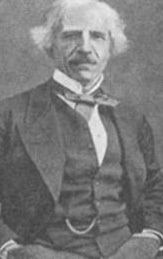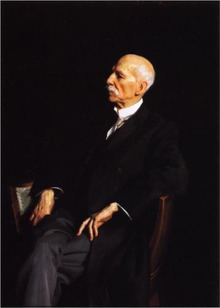Name Manuel Garcia Siblings Maria Malibran Children Gustave Garcia | Role Singer | |
 | ||
Died July 1, 1906, London, United Kingdom Books Hints on singing, A Complete Treatise on the Art of Singing: Complete and Unabridged | ||
Education University of Konigsberg Nephews Charles-Wilfrid de Beriot | ||
Manuel garcia el poeta calculista aria di tenore formare mi plan
Manuel Patricio Rodríguez García (17 March 1805 – 1 July 1906), was a Spanish singer, music educator, and vocal pedagogue. He is credited with the invention of the first laryngoscope.
Contents
- Manuel garcia el poeta calculista aria di tenore formare mi plan
- Manuel garcia don chisciotte recit aria di sancio pancia vittoria gran vittoria
- Biography
- Works
- References
Manuel garcia don chisciotte recit aria di sancio pancia vittoria gran vittoria
Biography
García was born on 17 March 1805 either in Madrid, as has been traditionally stated, or in the town of Zafra in Badajoz Province, Spain. His father was singer and teacher Manuel del Pópulo Vicente Rodriguez García (Manuel García I, 1775–1832). His sisters were Maria Malibran (1808–1836) and Pauline Viardot (1821–1910). After abandoning his onstage career as a baritone, García began to teach at the Paris Conservatory (1830–48) and the Royal Academy of Music, London (1848–95). Jessie Bond, Camille Everardi, Erminia Frezzolini, Julius Günther, Jenny Lind, Mathilde Marchesi, Christina Nilsson, Julia Ettie Crane, Julius Stockhausen, Marie Tempest, and Henry Wood were among his pupils. He invented a laryngoscope in 1854 and the next year published observations of his own larynx and vocal cords made with a small dental mirror introduced into the throat and using sunlight reflected by another mirror. García was interested in movements connected with the production of the singing voice and did not anticipate the importance of laryngoscopy for medicine. Still, the University of Königsberg conferred upon him the honorary degree of M.D. He died in London in 1906 at the age of 101 years and was buried in the churchyard of St. Edward's Catholic church in Sutton Green, Surrey. His grave gives details of his many famous pupils and accomplishments.

On 22 November 1832 in Paris García married the operatic soprano Cécile Eugénie Mayer (Paris, 8 April 1814 – Paris, 12 August 1880). They had two sons and two daughters. Their son Gustave Garcia (1837–1925) was a singer, actor, and author of three books on vocal and stage techniques. Gustave's son, Albert García (1875–1946), studied voice with his great aunt (Pauline Viardot), became a respected baritone, and produced an edition of his grandfather's treatise on singing (1924).
